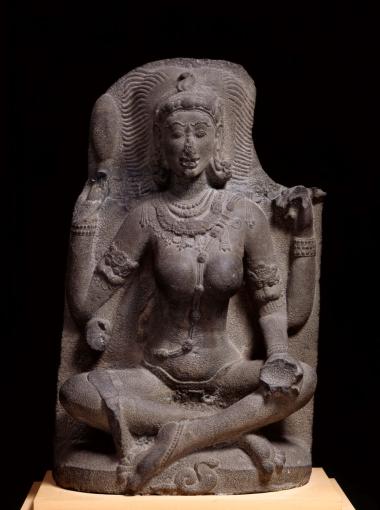The legend says that queen Maya, on her way to her parents’ home, had to stop in the garden of Lumbini Park, located nowadays in Terai (southern Nepal) to give birth to her son. Revealing of the extraordinary fate that was to be his, the circumstances of the birth of Buddha are miraculous. At the end of a pregnancy which lasted ten lunar months, the baby was born from his mother’s right side without causing her any injury. The newborn appears here, hands joined, under Maya’s armpit, already boasting the cranial protuberance (ushnisha), one of the major marks of his enlightended status. The queen radiates grace and serenity, standing under a tree and seizing one of its branches with her right hand, as the left hand forms the mudra of discussion with her joinded thumb and index finger.
Her honorific name being Mayadevi, the mother of the historical Buddha is represented as a tree goddess, a symbol of fertility and fruitfulness in ancien Indian art. These concepts are illustrated here by the lushness of the semi precious stone setting adorning the branches. Stylised lotus petals, a symbol of purity and rebirth, enhance the base of the statue.
This artwork is in pure copper, following the technical tradition more frequently observed in Nepalese statue art. It is made of three parts, cast separately then assembled. The queen’s ornaments were added to the original piece, as well as the swooping parts of her scarf. The tree trunk is formed of a hammered metal sheet with the branches in solid metal. The artwork is representative of the technical level of skill of Nepalese craftsmen and of the sculptors’ sense of movement. It is also a testament to a decorative taste both delicate and colorful.

